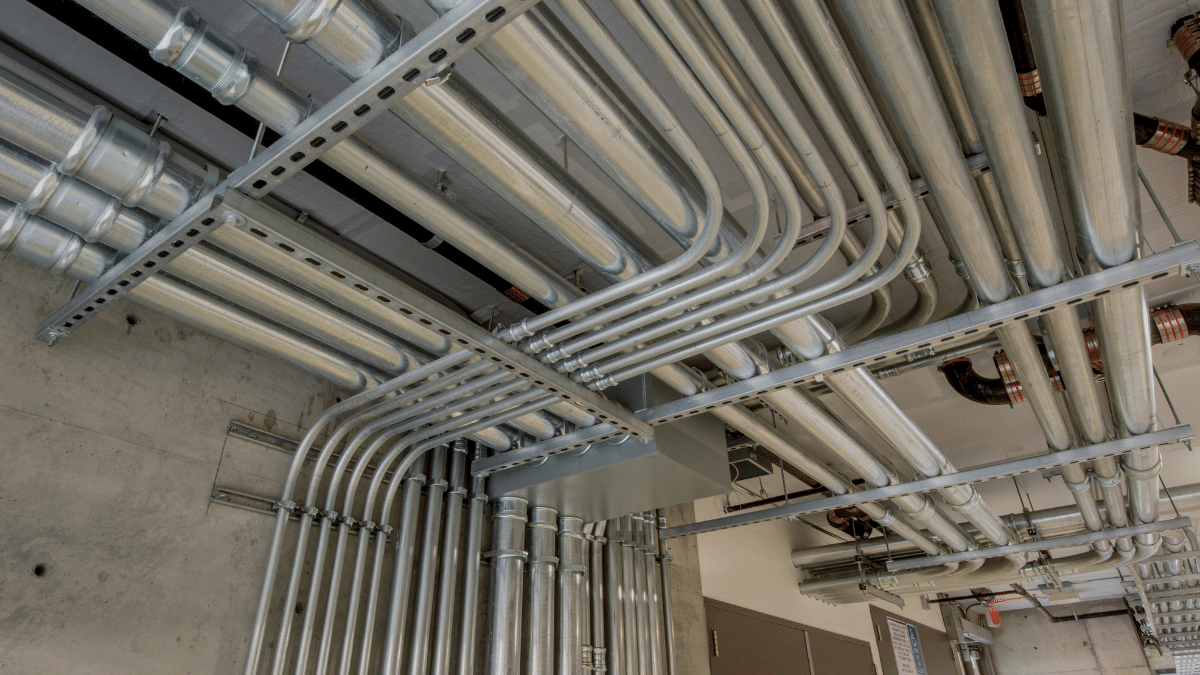How much will installing electrical conduit in your home or commercial building cost? This is an important question to consider as a homeowner, contractor, or electrician.
Electrical conduit serves as a protective casing for wires and cables, ensuring their safety and proper functioning within a structure. You must accurately estimate installation costs to avoid unexpected expenses that significantly impact your budget.
I will explore the factors involved in estimating the installation of electrical conduits and provide helpful tips for successful planning and execution.
Understanding the Basics: Electrical Conduit Installation
Electrical conduit installation is a fundamental aspect of electrical systems, providing protection and routing for electrical wiring. In this process, conduits safeguard wires from damage and ensure a structured layout for efficient electricity distribution. One key strategy to enhance the efficiency and accuracy of electrical conduit installation is to utilize electrical outsourcing services.
By leveraging electrical outsourcing, businesses can tap into specialized expertise and resources to streamline installation. Moreover, partnering with trusted outsourcing providers can bring innovative solutions and industry best practices to ensure a successful conduit installation project.
Understanding the basics of electrical conduit installation is essential for maintaining safety standards, complying with regulations, and achieving optimal functionality in electrical systems. Incorporating electrical outsourcing into the installation process can elevate project outcomes and contribute to electrical projects' overall efficiency and effectiveness.
Factors Influencing Cost Estimates for Electrical Conduit Installation
Estimating the cost of electrical conduit installation involves considering various factors that can influence the project's overall budget. Here are key factors to take into account when calculating cost estimates:
Material Costs:
The type and quantity of materials required for the installation, including conduits, fittings, wires, and connectors, significantly impact the total cost.
Labor Expenses:
Labour costs for skilled electricians or technicians involved in the installation process contribute significantly to the overall budget. Labor rates, hours worked, and expertise required can affect costs.
Site Conditions:
Site-specific factors like accessibility, existing infrastructure, terrain challenges, and environmental conditions can influence the complexity of the installation process, thereby impacting costs.
Project Scope:
The size and complexity of the project, including the number of circuits, bends, junction boxes, and special requirements, play a crucial role in determining the overall cost estimate.
Regulatory Compliance:
Adhering to electrical codes, permits, inspections, and safety standards is essential for compliance but can also add costs to the project due to necessary documentation and approvals.
Equipment and Tools:
Specialized equipment, tools, and technology required for the installation process contribute to the overall cost estimate. Consider factors like rental fees, maintenance costs, and tool purchases.
Contingency Planning:
Including contingency funds in the cost estimate to accommodate unexpected changes, delays, or additional requirements can help prevent budget overruns and ensure project completion within the set budget.
Timeline and Scheduling:
Project timelines, deadlines, and scheduling constraints can impact costs, significantly if expedited work or overtime hours are necessary to meet specific deadlines.
Considering these factors and conducting a detailed analysis of each aspect can yield more accurate cost estimates for electrical conduit installation projects.
Best Practices for Accurate and Efficient Estimating in Electrical Conduit Installation
Accurate and efficient estimating is crucial for the success of electrical conduit installation projects. To ensure precise calculations and streamlined processes, consider implementing the following best practices
- Conduct a comprehensive evaluation of the installation site to understand layout intricacies, potential obstacles, and specific requirements that may impact the estimating process.
- Employ modern software tools designed for electrical estimating to facilitate accurate measurements, material calculations, and cost projections, thereby reducing errors and improving efficiency.
- Partnering with experienced electrical outsourcing services can provide specialized knowledge and skills, enhancing the accuracy of estimates and optimizing the installation process.
- To mitigate risks and maintain budget control, include contingency allowances in your estimates to account for unforeseen circumstances or changes in project scope.
- Stay abreast of industry regulations, electrical codes, and best practices to ensure compliance and avoid costly reworks or delays during installation.
- Foster open communication channels among project stakeholders, including clients, contractors, and team members, to clarify expectations, address concerns promptly, and maintain project transparency.
- Continuously review and refine estimating processes based on feedback from previous projects, identifying areas for improvement and implementing adjustments to enhance accuracy and efficiency over time.
By incorporating these best practices into your estimating approach for electrical conduit installation projects, you can optimize project outcomes, minimize errors, and deliver results that align with client expectations and industry standards.
Conclusion
Electrical conduit installation estimating is an essential aspect of any electrical project. It allows for more accurate and efficient planning, saving time and money. Consider all factors when estimating, such as material costs, labor costs, and potential complications. Technological advancements, such as software programs and online tools, have greatly improved estimation in recent years. Use these resources to your advantage to streamline your estimations and improve accuracy.
Additionally, staying up-to-date on industry standards and regulations will ensure that your estimates are compliant and minimize potential roadblocks during installation. Remember to underestimate the importance of proper estimation; it can make or break a project. So take the time to carefully evaluate all aspects of the job before submitting your estimate.

